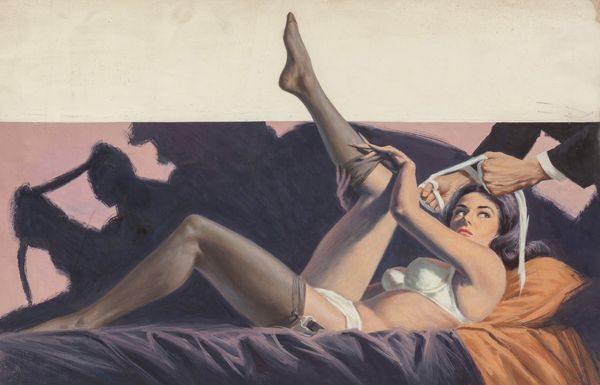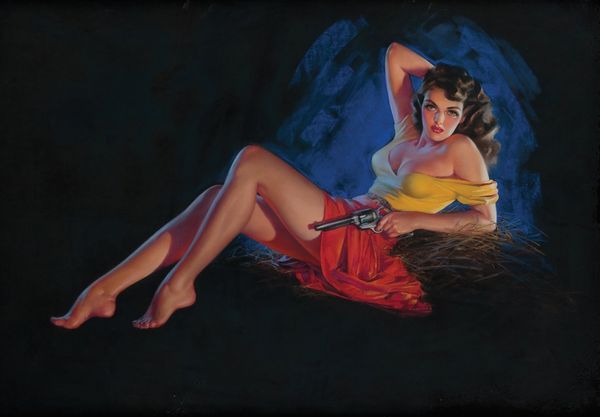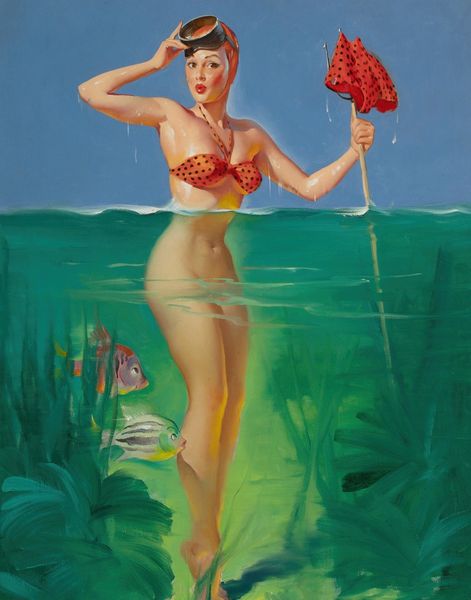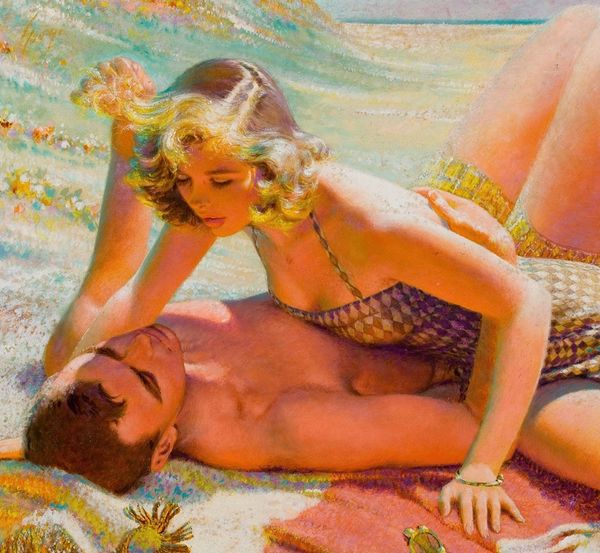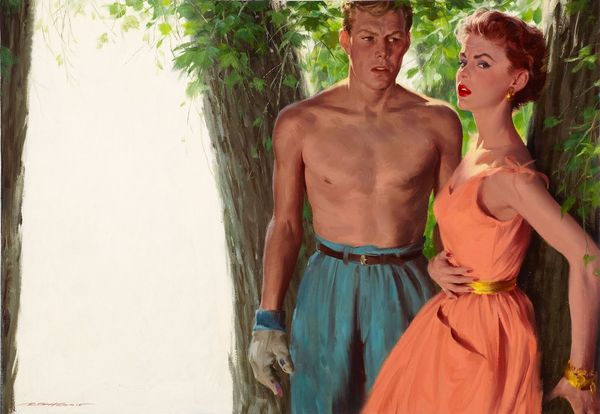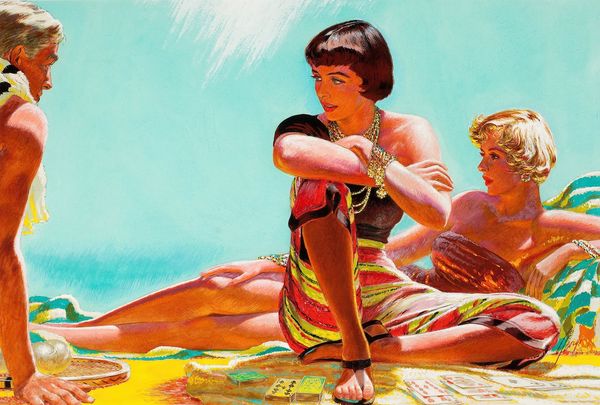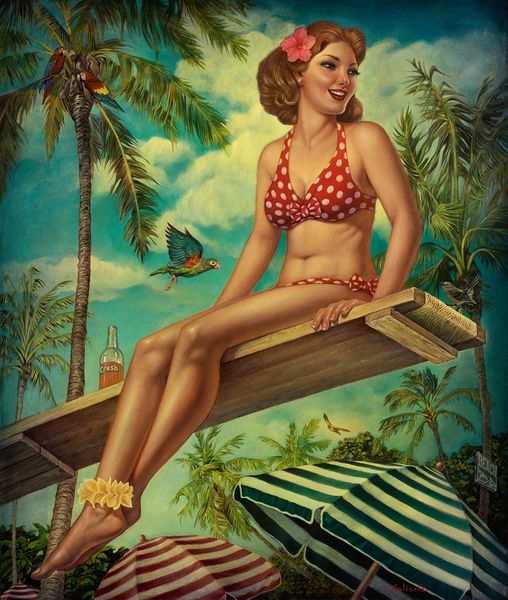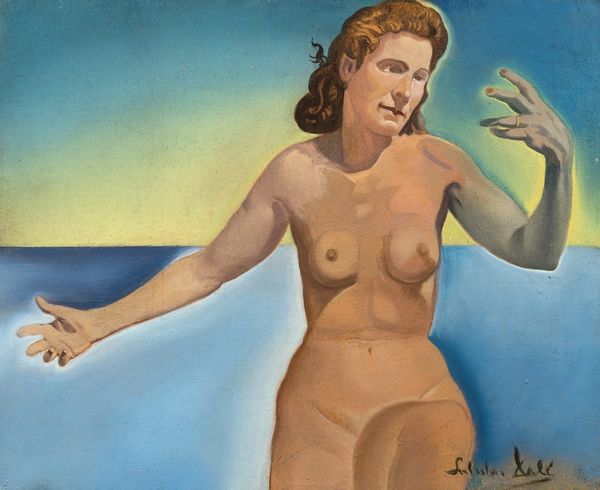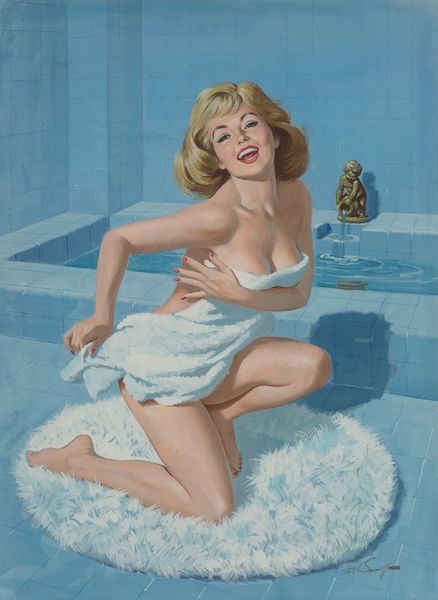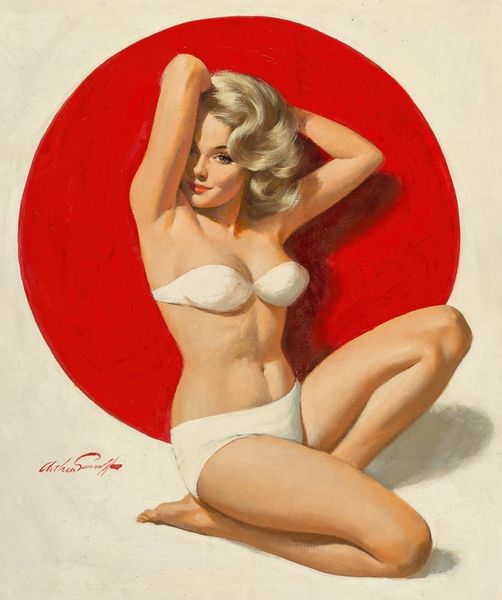
painting
#
surrealistic
#
fantasy art
#
painting
#
fantasy-art
#
figuration
#
surrealism
#
surrealism
#
erotic-art
Copyright: Modern Artists: Artvee
Curator: Here we have Mort Künstler’s, The Captured and the Captivated, from 1965. The painting presents us with quite a narrative tableau. What's your initial read? Editor: The limited palette immediately strikes me. The near monochrome lends it an unsettling, dreamlike quality. And what's with the dynamism inherent to the composition of forms, especially between the woman in the foreground, the GI sitting in the tree, and that wild looking Tarzan figure ripping the canvas? Curator: That “wild” figure you mention raises several questions about its context and underlying meaning. The painting clearly references both pulp adventure and perhaps even the tropes found within male fantasies. Who holds power, and who is subject to it, seems central to how we view the artist’s representation of masculinity, femininity and primitivism in the painting. Editor: True, but there is that foreground figure pulling on her bathing suit as a deliberate aesthetic act to the composition itself; the gesture directs the eye deeper into the space. This kind of self-aware contrivance of line and form cannot be overlooked, in terms of how we are intended to relate to these different forms of male-female tension and relations between civilization and primitivism. Curator: Certainly, the visual relationship you describe can easily become something akin to spectacle that can risk falling back onto the representation of stereotypes of a White Western male's gaze on a woman or on so-called primitive men that reinscribes those oppressive power dynamics onto an objectified Other. This kind of Orientalism is present in visual culture from its historic roots into today’s media. Editor: Yes, but isn't that reading itself reliant on a certain narrative pre-determination that misses out on the sheer pictorial complexity here? Consider how our perspective shifts constantly. It's not merely a subjugation but also an invitation, almost as though all the characters want to say or ask us something? Curator: An invitation yes, perhaps into a larger questioning of the West's relationship to itself, to its perceived others, and to those historical tensions still impacting present-day structures of oppression, patriarchy, and racism that this imagery activates even further. Editor: Okay, so to return to my opening comment then; what if the dream we seem to witness and be caught up in represents not domination but a more complex interplay of aesthetic gestures, which also function, let us agree, as symbols of conflict and attraction, or if you like domination, within a limited register of chromatic affect, spatial relation, and iconographic potential? Curator: I concede your emphasis on pictorial gesture provides insight. I remain troubled by how easily a critical approach could turn towards validating or repeating forms of othering. Food for thought, I think. Editor: And the piece itself performs the same function on both its own context and our experience.
Comments
No comments
Be the first to comment and join the conversation on the ultimate creative platform.
